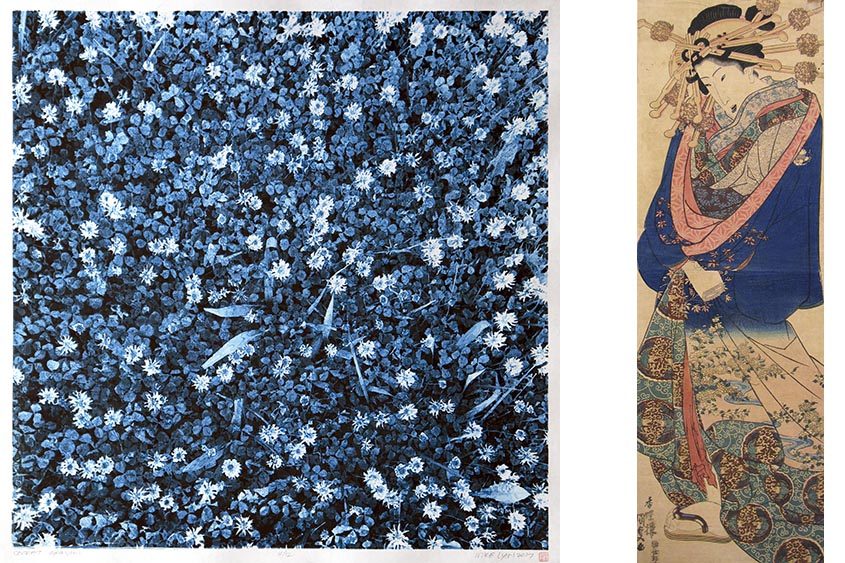The Daily Gazette: When Credibility Matters
January 4, 2018
Schenectady
On Exhibit: The precision of the mokuhanga art form
New at Crowell and West Galleries at Union College
By Indiana Nash | January 4, 2018

The exhibition, which went up on Jan. 3 at the Crowell and West Galleries at Union College, delves into the traditional Japanese woodblock print form of art and how the technique is being adopted by artists of today and used in a cutting-edge methodology.
“It’s an arduous process,” said Sheri Lullo, an assistant professor of visual arts and co-curator of the exhibition.
Wooden blocks are carved with the desired design. Then water-based paints are implemented on certain sections of the block. The carving must be precise and, depending on the piece, several must be done to complete.
But there is something uniquely beautiful that becomes of this taxing process and the process shines through even in the finished product. As Lullo said, you can’t often see the brushstrokes in an oil painting, you just get lost in the image. With mokuhanga, the viewer can see each layer and appreciate the process as well as the finished product.
Some of the earliest pieces in the exhibition are ukiyo-e pieces or “floating world” pieces from the 17-19 centuries. It’s a concept which originated in the Buddhist religion and it’s a reminder of the ephemeral nature of the world. As many would say today, the pieces are a reminder to “stay present.”
Utagawa Kunisada, perhaps one of the most famous ukiyo-e artists, used the technique in “Untitled Woman,” a piece with a beautiful woman with a deep blue, white and intricately decorated robe. Within the intricacies of Kunisada’s work, the viewer can see the arduous process of mokuhanga in a new light, imagining what it must have taken to carve out such tiny details for each piece.
But the exhibition also includes modern artists like Mike Lyon, who are taking the art form in a new direction.
“Most of the artists work in traditional methods but they add modern techniques,” Lullo said.
Lyon integrates automated machine tools and digital technology to cut the wood blocks. In the making of “Sara,” an expansive piece in the exhibition, it seems that the technology allowed for a more precise block. The deep blueprint, featuring a woman lying gracefully on a bed, looks more like a photograph in some ways because the lines are so sharp.
Lyon will be visiting campus in March and talking to students in “The Floating World: Edo Prints and Printmaking” class.
“We’re using the show as a teaching space,” Lullo said. She and her co-curator Sandy Wimer, a senior lecturer and printmaker at the college are teaming up to teach art history in a more hands-on fashion. Half the class will be all about the history of the mokuhanga art form and the other half will allow students to actually create their own works in that style.
Other modern-day mokuhanga artists like April Vollmer and Takuji Hamanaka will also be visiting the exhibition and talking to students and the public about the technique. The reception is scheduled from 5 p.m. to 7 p.m. on Thur., Feb. 1 at the Crowell and West Galleries in the Feigenbaum Center for Visual Arts at Union College.